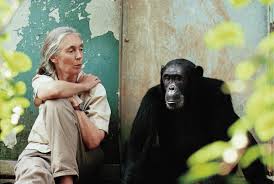Just let me get something off of my chest before I start talking about Jason Groves’ article “Goethe’s Petrofiction: Reading the
Wanderjahre in the Anthropocene” in the special section on Goethe and environmentalism in volume 22 of Goethe Yearbook. The word “anthropocene” (interestingly, my spell check does not recognize the term) makes me gnash my teeth. We already have a good geological term for when humans first appear in the geological record:
Der Mensch erscheint im Holozän (1979, Man in the Holocene), as in Max Frisch’s wonderful novel. “Anthropocene” carries connotations of human damage to the environment, as in “ecological serial killers.” Clearly the term is meant to “formalize” human-induced environmental change.
Okay, that is off my chest. Let me turn to Jason Groves’ article, which is the first I read in this section because it is on Goethe and geology, which was also a subject of an article of mine that appeared in the GYb in 2008. Goethe’s earliest scientific writings, from 1784–85, were on granite, and I analyzed the essays in connection with the aesthetic category of the sublime. And though I did gnash my teeth over the word “anthropocene,” Jason’s essay is really first rate and only minimally disfigured with un-ecological writing. Jason (whom I have not met, but since I am sure we will meet in the future I take the liberty of referring to him by his first name) takes Goethe’s explorations in geology into the 19th century and links the
Wanderjahre with so-called erratic blocks with which Goethe was familiar, “large, ostensibly displaced boulders that were known to litter parts of Thuringia, Prussia, and Mecklenburg.”
 |
| Markgrafenstein mid-19th centry |
From the 1820s Goethe received samples of these boulders from one of his many correspondents. The
Markgrafenstein, near Brandenburg, particularly interested him. This was a 700-ton granite boulder that he discussed in his 1828 essay “Granitarbeiten in Berlin.” It turns out to be a “1.2 billion-year-old boulder from a Scandinavian outcroppping.” Clearly no one, especially not Goethe, knew of its age, but as Jason writes “it was widely surmised to be an important piece of evidence in the history of the earth.” Goethe’s own geological adviser J.C.W. Voigt had already ventured to suggest that such displaced blocks gave evidence of an early Ice Age.
 |
| "Spaltung" |
(Click on all pictures to see them enlarged. The following pictures here show, as described in the essay, the the labors of master builder Christian Gottlob Cantian, stone masons, and others to to shave off a 75-ton fragment that was carted to the Altes Museum in Berlin and polished into a "Granitschale." It still stands there today. The black-and-white images are from
Dieter Kloessing.)
 |
| "Verladung" |
This very suggestive piece of scholarship proceeds not from the premise that the earth is powerless against the depredations of humans. Nigel Clark (and other “critical voices”) is quoted to the effect that that “whatever ‘we’ do, … the planet is capable of taking us by surprise.” Thus, ”the various environmental disasters associated with the Anthropocene [are also] evidence of ‘our susceptibility to the earth’s eventfulness’ rather than just the earth’s susceptibility to human eventfulness.” In turn, Goethe’s interest in erratic granite blocks “evinces an openness to the planet’s inherent instability and thus to human vulnerability.” I immediately wrote in the margin that Goethe did not like instability, and it struck me that Jason did not deal with this issue sufficiently. Was it a case of Goethe being drawn to something that frightened him?
 |
| "Aufstellung" |
I won’t harp on this, however, because the essay is a wonderfully rich reading of the geological formations that appear in the
Wanderjahre. Not only is the novel about itinerant humans, but it is also full of wandering “erratics” of a non-human type, especially in the 1829 version. The novel is set in a “neue, bewegliche Welt,” full of “interpolated tales of foolish pilgrims, displaced laborers, and emigrants to America.” But, as Jason writes, “Inhuman things also wander.” Throughout the novel, the earth does not appear simply as a monolith, but instead in the form of animated, active, transitory fragments. As he notes, drawing on Wolf von Engelhardt, stones and rock formations, when appearing as predicates, are never static or passive. Instead the verbs are always active and reflexive:
zeigen sich,
verwandeln sich,
erzeugen sich, and so on. “In this drama of things, mineral agents take humans as accusative objects: they address us, they come together to make formations.”
 |
| "The Biedermeierweltwunder" by Johann Erdmann Hummel |
I recommend the essay for its detail and for its excellent use of a variety of sources. It demonstrates the insight into Goethe’s poetic work that can be had when considering it in connection with his scientific explorations. In this connection, this volume of the GYb also offers a review by Astrida Orle Tantillo of the
Goethe Handbuch supplement
Naturwissenschaften.
Aside from the lack of resolution concerning Goethe’s fascination with erratics vis à vis the volatility of the earth, there was another issue that might be further explored. I interpret somewhat differently a passage Jason quotes from the final section of the novel, part of the discussion of contemporary theories of the earth’s formation. “A few quiet guests,” as Goethe calls them, seem to ruminate about a time of immense glaciers, when masses of primeval rock slid down from on high and huge blocks of rock were transported by means of floating ice. This passage appears as the epigraph of Jean de Charpentier’s
Essai sur les glaciers of 1841; for
Charpentier, student of Swiss glaciers, they were “milestones in the discovery of former ice ages.” But might it not be the case that the passage is exactly about what Nigel Clark suggested, and that the guests were drawing on a deep human memory of the "earth's eventfulness," a period of volatile instability, in the face of which "human eventfulness" counted as nothing?
Image credits:
Lars Gabrysch;
The Economist;
Dieter Kloessing




























